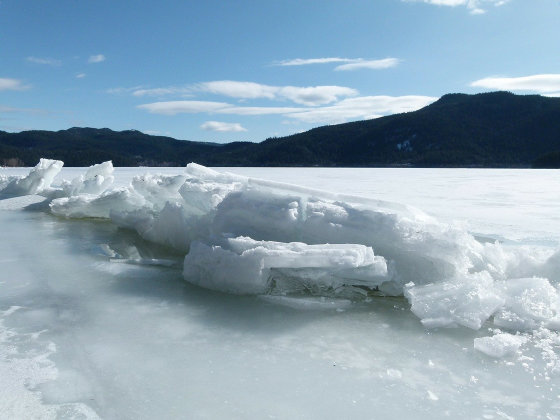Human temperature and environment are severely affected by only two changes in the Earth's temperature

Climate change is expected to increase global temperatures by two degrees in the coming decades. It seems to be a small change when you hear `` 2 degrees '', but in history, archeology consultant Alan Williams and others point out that the impact was huge when the temperature changed twice .
The last ice age tells us why we need to care about a 2 ° C change in temperature
While climate change stands in front of humanity as a major issue, a recent report by the Intergovernmental Panel on Climate Change (IPCC) suggests that global feasibility in the coming decades would not be possible without a significant decline in fossil fuel use. The average temperature is forecast to rise by 2 degrees. In high latitudes, this temperature is expected to rise to 3-6 degrees.
The word 'two changes' sounds like a minor change, but it actually changes the environment. For example, the last ice age in Earth's history was when the average temperature of the earth dropped by two to four degrees.
It is said that the last glacial period started about 70,000 years ago and ended 10,000 years ago, but its peak is thought to have been 21,000 years ago.
Globally, the greatest impact of this ice age on Earth was the emergence of ice sheets in the Arctic and Antarctic. The 4 km thick ice sheet covered Northern Europe, Canada, North America and Northern Russia. If the same phenomenon happens today, about 250 million people will have to migrate.

And because the water turned into ice, the sea level was 250 meters lower than today, exposing much land. Australia has 20% more land than modern times, the northern part is connected to Papua New Guinea, and
These land changes have made Australia a drier and windier place. The monsoon that rains across the upper third of Australia and rains in the dry central continent is weakened or moves off the continent, and the winter west wind that rains on the southern continent has moved to the southern ocean Is considered. As the rainfall decreases, the dry land spreads, and it is believed that the area that forms the agricultural area as a semi-arid land has been turned into a desert in modern times.

Archeological evidence suggests that humans have undergone two changes in response to such environmental changes. One is that people have moved to inland areas where fresh water is easily accessible. Second, the lack of food and water has reduced the population by up to 60%. In terms of Australia's population today, 15% of the population in Sydney, Melbourne, Brisbane, Canberra, Perth, Adelaide, has fallen.
In the above example, the temperature is '2 degrees lower', which is the opposite of the 'temperature increases' state, but Australia in the second half of this century has similarities to the last glacial state. Future In Australia, more and more hot days, change of rainfall is increased, more intense cyclone struck the northern part, and drought of the land is to accelerate (PDF file) has been predicted . Rising sea levels are expected to affect 50% of residents living within 7 km of the coastline.
People who have survived the last glacial era have been mobile and adapted to dry lands, but living in the present age we live in a settled state and relying on existing food production systems will be a major challenge. That. Of course, we should work to reduce carbon dioxide emissions, but researchers say that if major climate change is unavoidable, long-term sustainable plans for affected areas should be made. Did.
Related Posts:
in Science, Posted by darkhorse_log







